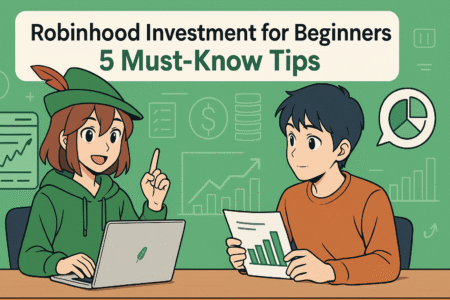Table of Contents
Are you looking for smart ways to start getting money in your free time? Whether you’re hoping to make a bit of extra cash on the side or looking to start a full-fledged business, there are numerous opportunities to explore. In this article, we’ll answer questions like, “How can I make money from home without much investment?” and “What are the best strategies to get started?”
From blogging to dropshipping, creating online courses to leveraging email marketing, there’s a method that can fit into your schedule, skills, and interests. Let’s dive into these proven strategies for getting money without sacrificing your free time.
How Blogging Can Help You Start Getting Money Easily
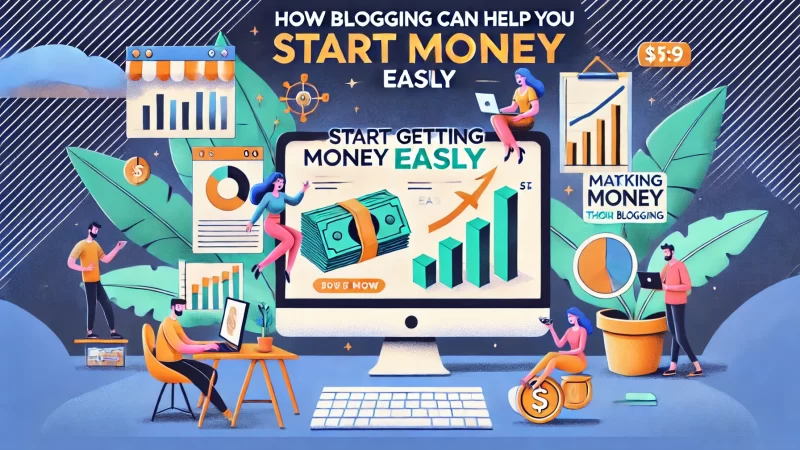
Blogging is one of the most accessible ways to start generating income in your free time. It doesn’t require significant upfront costs, and you can easily set up a blog to share your insights or expertise. With the right strategy, a blog can become a consistent source of income, leveraging various monetization methods.
Another advantage of blogging is the flexibility it offers. You can write at your own pace, and as your blog grows, so will your earning potential. Whether through ads, sponsorships, or affiliate marketing, a well-maintained blog can be a powerful tool for getting money with minimal time investment.
Why Blogging Is A Smart Strategy For Getting Money
Blogging is a smart strategy because it allows you to turn your passion or knowledge into a business. I’ve found that by focusing on what you love, creating valuable content becomes easier. Over time, readers trust your voice, and trust leads to income opportunities through affiliate marketing, sponsored content, and product sales.
Starting a blog also requires very little investment compared to other side businesses. I recommend beginning with a free or low-cost platform, then scaling as your audience grows. The more value you provide, the more people will engage with your content, which ultimately leads to earning opportunities.
One key advantage of blogging is its scalability. As your blog grows, your income potential increases without a proportional rise in effort. I think this is what makes it appealing; the time investment upfront can turn into passive income down the road. With automation tools, you can maintain a steady flow of content, making blogging a sustainable option.
I also suggest that new bloggers focus on building a loyal audience. Creating content that speaks directly to your readers’ needs will keep them coming back. The more visitors you get, the better your chances of earning through ads or partnerships. It’s all about maintaining that connection.
Lastly, I believe that blogging allows you to diversify your income streams. You can earn through ads, affiliate links, sponsored posts, or even by selling your own products. Having multiple ways to make money ensures that you’re never relying on just one source of income, which can be empowering.
Choosing The Right Niche For Maximizing Blogging Earnings
Choosing the right niche is crucial for maximizing blogging income. I always suggest starting with a topic you’re passionate about but also one that has a demand. Niches like personal finance, fitness, or travel tend to perform well because they attract a wide audience interested in solutions or inspiration.
To find a profitable niche, I suggest conducting keyword research. Tools like Google Trends or SEMrush can show you what people are searching for. This helps you align your blog with popular topics, increasing the likelihood of attracting more readers. Finding the balance between passion and profit is key.
After choosing a niche, it’s essential to create content that stands out. I recommend focusing on solving specific problems within your niche. For example, in a crowded field like fitness, targeting a subset like “fitness for beginners” or “home workout plans” can make your blog more unique and valuable.
Another factor to consider is monetization potential. Some niches are more lucrative than others when it comes to affiliate programs or advertising. I noticed that technology and finance niches often offer higher-paying affiliate opportunities. Research your niche to ensure there are enough monetization avenues available.
Lastly, I find that consistency in your niche helps build authority. Once you choose your focus, stick to it. A blog that jumps between unrelated topics confuses readers and reduces engagement. I recommend focusing on a single niche to build a loyal audience that trusts your expertise.
Key Blogging Platforms To Get Started In Your Free Time
When starting a blog, choosing the right platform can make all the difference. I recommend platforms like WordPress or Blogger because they are user-friendly, flexible, and cost-effective. WordPress, in particular, offers a wide range of themes and plugins that allow you to customize your blog easily.
For beginners, Blogger is a good option. It’s free, easy to use, and integrates well with Google products like AdSense. I think this makes it a great place to start before transitioning to more advanced platforms as your blog grows. It’s ideal if you want to start getting money without a steep learning curve.
Self-hosted WordPress offers more control over your blog’s design and functionality. I suggest going this route if you’re serious about blogging and want to have the flexibility to monetize in various ways. With WordPress, you can integrate eCommerce, ads, and affiliate links without any restrictions.
Wix is another option for beginners who prefer a drag-and-drop website builder. I find that it’s simple to use, and you don’t need any coding knowledge to design a professional-looking blog. Wix also offers some decent built-in SEO tools, which is a plus for anyone aiming to grow quickly.
For those interested in making money right away, Medium is a unique platform that pays writers based on reader engagement. I think it’s a great starting point if you want to focus solely on writing and audience building without worrying about technical aspects like website hosting or maintenance.
Monetizing Your Blog Through Ads, Sponsorships, And Affiliates
Monetizing your blog is where things get exciting. I suggest starting with affiliate marketing, where you earn a commission by promoting other companies’ products. Programs like Flexoffers or ShareASale make it easy to add affiliate links within your content, offering a passive way to earn money.
Sponsorships can also be lucrative, especially as your blog grows. Brands pay bloggers to write about their products, creating content that benefits both you and them. I’ve seen that sponsorships often pay much more than ads, making them a valuable revenue stream for established bloggers.
Ads are another straightforward way to make money. Using networks like Adsterra, you can display ads on your blog and get paid when readers click on them. However, I’ve learned that ads work best for blogs with high traffic. For smaller blogs, affiliate marketing and sponsorships might be more profitable.
I also recommend offering paid reviews. Brands love to partner with bloggers who can provide an honest and thorough review of their products. This not only boosts your income but also strengthens your blog’s reputation as a trusted resource. I’ve found this approach works well once you have a loyal audience.
To maximize your earnings, I advise diversifying your revenue streams. You don’t have to rely solely on one method. By incorporating ads, affiliate marketing, and sponsorships, you can create multiple income sources, ensuring that your blog remains profitable even if one stream fluctuates.
Essential SEO Tips To Grow Your Blog Audience
To grow your blog’s audience, mastering SEO (Search Engine Optimization) is essential. I always emphasize starting with keyword research. By targeting the right keywords, you increase your chances of ranking higher on Google, which means more readers will find your blog organically.
Once you’ve chosen your keywords, I recommend using them strategically. Place your keywords in your blog title, meta descriptions, and throughout your content in a natural way. But don’t overdo it! I find that keyword stuffing can harm your SEO rankings. A balanced approach works best.
I also suggest focusing on building backlinks. When other reputable sites link to your blog, it signals to Google that your content is valuable, boosting your ranking. I’ve seen firsthand how guest blogging or collaborating with other bloggers can help grow your audience through backlinks.
Optimizing your blog’s load speed is another critical factor. A slow site can drive readers away and hurt your SEO rankings. I recommend using tools like Google PageSpeed Insights to test your site speed and make improvements. Fast sites not only rank better but also keep readers engaged.
Lastly, I advise creating evergreen content—posts that remain relevant for a long time. Evergreen content keeps bringing in traffic because it’s always useful. I’ve noticed that blogs with evergreen content tend to attract steady streams of readers over time, making it a great strategy for growth.
How To Create Valuable Content That Attracts Readers
Creating valuable content is key to attracting readers and keeping them engaged. I always suggest starting with in-depth research on your target audience. Understanding their needs and pain points allows you to tailor your content to provide real solutions, which is crucial for building trust.
I recommend focusing on quality over quantity. Publishing fewer but more valuable posts helps you stand out in a crowded blogging space. I’ve seen how high-quality, actionable content resonates more with readers, driving more engagement and sharing compared to shallow, frequent posts.
Interactive content, like quizzes or polls, can also enhance your blog’s value. I love using these tools because they encourage reader participation, making your blog more memorable. The more interactive and engaging your content, the longer visitors stay on your site, which helps with SEO.
Another great strategy is to use visuals. People are naturally drawn to images, infographics, and videos, so incorporating these elements into your blog posts can significantly increase engagement. I find that posts with images and other media tend to get more shares on social platforms.
Finally, I suggest always updating older posts to keep them relevant. As I’ve learned, a blog that’s up-to-date continues to attract traffic. By refreshing content with new information or insights, you signal to readers and search engines that your blog is a reliable, current resource.
Dropshipping: A Profitable Side Hustle For Getting Money
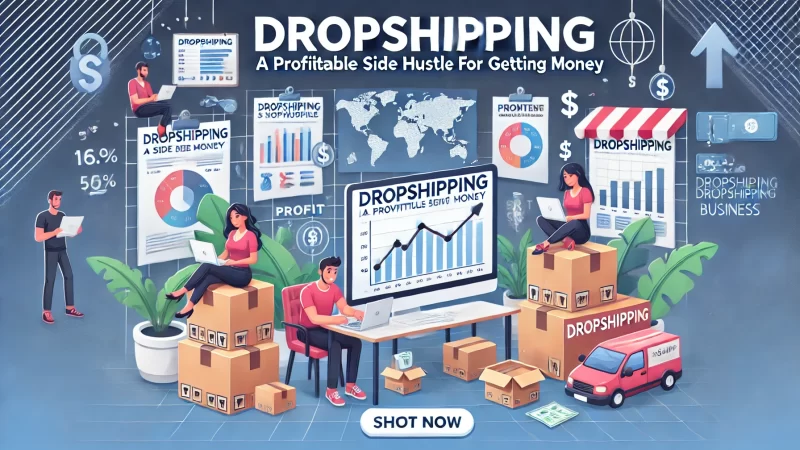
Dropshipping has become one of the most popular ways to start getting money without a heavy upfront investment. It allows you to sell products online without holding any inventory. When a customer places an order, your supplier ships the item directly to them, eliminating the need for storage.
One of the main benefits of dropshipping is its low entry cost. You don’t need to buy products in bulk or manage shipping logistics, making it an ideal option for beginners. I’ve noticed that many entrepreneurs successfully run dropshipping stores part-time, turning it into a profitable side hustle.
How To Start A Dropshipping Business With Minimal Investment
Starting a dropshipping business requires minimal investment, making it a smart way to get started without breaking the bank. I suggest beginning with an affordable eCommerce platform like Shopify or WooCommerce. These platforms offer ready-to-use templates, so you don’t need technical skills to build your store.
You can keep startup costs low by focusing on essential tools first. I’ve heard that choosing basic apps for order management, inventory syncing, and payment processing is enough when starting out. It’s also helpful to avoid overspending on unnecessary features until your business grows.
I think it’s a good idea to work with suppliers that don’t require upfront fees or minimum order quantities. I’ve noticed that platforms like AliExpress and Oberlo let you connect with suppliers who ship products as you sell them. This keeps your risk low and allows you to invest in other areas.
To save money, I recommend using free marketing tactics like social media and SEO to drive traffic to your store. Paid ads can come later, but organic traffic helps you test the waters without spending much. I find this approach works best when you’re just starting and want to minimize expenses.
Lastly, I’ve learned that keeping your product lineup small helps you stay focused. By choosing a few high-quality, trending items, you can streamline your business operations and reduce overhead costs. Fewer products also make inventory management much easier, giving you more time to focus on sales.
Selecting Trending Products That Sell For Dropshipping
Choosing the right products is the key to success in dropshipping. I suggest looking for trending products with high demand but low competition. Tools like Buzzsumo and AliExpress can help you discover items that are currently popular and have the potential to generate sales quickly.
It’s important to choose products with high perceived value. I find that customers are willing to pay more for unique or innovative items. Gadgets, lifestyle accessories, and fitness products often perform well in this space, as they appeal to consumers looking for solutions to common problems.
I also advise staying away from fragile or complex products that are prone to shipping issues. From what I’ve experienced, handling returns or damaged goods can eat into your profits. Instead, opt for items that are lightweight, easy to ship, and have minimal chances of getting damaged in transit.
To stay competitive, I recommend keeping an eye on seasonal trends. Products that cater to specific holidays or events, such as Christmas decorations or back-to-school supplies, can boost sales during peak seasons. I’ve seen many dropshippers take advantage of these periods to maximize their earnings.
Another smart strategy is to test a few different product categories before settling on a niche. By running small ad campaigns for various items, you can see what resonates most with your audience. I find that this approach helps you understand what your customers want, allowing you to refine your product selection over time.
Best Online Platforms For Setting Up A Dropshipping Store
Choosing the right platform is essential for building a successful dropshipping store. I recommend Shopify for its ease of use and integration with dropshipping apps like Oberlo. Shopify’s interface is user-friendly, and you can set up a fully functioning store in just a few hours, even without prior experience.
Another great platform is WooCommerce, especially if you prefer to use WordPress. I’ve noticed that WooCommerce offers more customization options, allowing you to build a store that’s tailored to your brand. The platform is also free to use, making it a cost-effective solution for those on a tight budget.
For those looking for simplicity, I suggest trying BigCommerce. It’s a cloud-based platform with built-in tools that cater specifically to eCommerce businesses. I’ve heard many entrepreneurs praise its scalability and wide range of payment gateway options, which help streamline the buying process.
If you’re focused on the U.S. market, I recommend using Spocket. It’s a dropshipping platform that connects you with suppliers based in the U.S. and Europe. This helps reduce shipping times and provides better customer service, which I believe is critical for long-term success in dropshipping.
Lastly, AliDropship is another option worth exploring. This WordPress plugin allows you to easily import products from AliExpress and manage them within your WooCommerce store. I find that it’s a great alternative for those who want to build their own store while still leveraging AliExpress suppliers.
Marketing Your Dropshipping Business For Maximum Profit
To maximize profits, I suggest focusing on targeted marketing strategies. Social media advertising, particularly on platforms like Facebook and Instagram, can drive traffic to your store. I’ve seen dropshippers achieve impressive results by using eye-catching visuals and targeted ads to reach potential customers.
Another marketing method I highly recommend is influencer marketing. Partnering with influencers in your niche can help you reach a broader audience quickly. I’ve noticed that micro-influencers, who have smaller but highly engaged followings, often provide a better return on investment than larger influencers.
Email marketing is another powerful tool for generating sales. I think building an email list should be a priority from day one. By collecting email addresses through sign-up forms or lead magnets, you can send targeted offers and updates directly to your audience, increasing the chances of repeat purchases.
For long-term success, I advise working on your store’s SEO to improve organic search rankings. Writing product descriptions with relevant keywords and optimizing your website speed can help you rank higher on search engines like Google. I’ve found that organic traffic is a reliable way to get consistent sales without relying solely on paid ads.
Lastly, I believe offering discounts and promotions can boost your sales significantly. Limited-time offers or flash sales create urgency, prompting customers to make a purchase sooner rather than later. I’ve also seen success with offering free shipping, as it’s an easy way to attract more buyers and increase conversions.
Common Pitfalls To Avoid When Dropshipping
Dropshipping can be a lucrative business, but there are some common pitfalls you need to avoid. One mistake I’ve seen many new dropshippers make is selecting unreliable suppliers. I suggest vetting your suppliers thoroughly to ensure they deliver quality products on time, as shipping delays can hurt your reputation.
Overpricing your products is another pitfall to watch out for. I’ve noticed that customers are savvy and will compare prices before purchasing. I recommend keeping your prices competitive by researching what other dropshippers in your niche are charging. Offering value through competitive pricing is essential for attracting customers.
Another common mistake is neglecting customer service. I advise staying on top of customer inquiries and offering quick, helpful responses. Poor customer service can lead to negative reviews, which can harm your business. I find that creating a smooth experience for your customers ensures they return to your store.
I’ve also seen dropshippers get stuck with poor marketing strategies. I recommend testing different approaches, like email campaigns, influencer partnerships, and social media ads, to see what works best for your audience. Diversifying your marketing efforts keeps your store visible and helps maintain a steady stream of traffic.
Lastly, I believe overloading your store with too many products can be overwhelming. It’s better to start with a small selection of well-researched, high-demand items. As your business grows, you can gradually expand your product range. Focusing on quality over quantity often leads to higher sales and fewer operational headaches.
How Automation Can Make Dropshipping An Easy Side Business
Automation tools can transform dropshipping into an easy side business. I recommend using apps that automate order processing, inventory management, and product imports. Tools like Oberlo and Dropified save you time by syncing your store with suppliers, allowing you to focus on growing your business rather than manual tasks.
I suggest automating your customer service as well. With chatbots and automated email responses, you can address common customer inquiries quickly, freeing up time to focus on other aspects of your business. I’ve noticed that automation in customer support leads to faster response times and improved customer satisfaction.
Marketing automation can also make a significant difference. I recommend using email automation tools to send abandoned cart reminders or follow-up offers. This ensures that no sales opportunities are missed, and it helps keep your audience engaged without much effort on your part. Tools like Mailchimp or Klaviyo are great for this.
Another area where automation shines is social media scheduling. I’ve used tools like Hootsuite and Buffer to pre-schedule posts across different platforms, ensuring my store stays visible even when I’m busy. Automated posting keeps your brand in front of potential customers, making it easier to maintain consistent engagement.
Finally, I believe automation allows you to scale faster. By automating repetitive tasks, you can spend more time optimizing your store and expanding your product range. I’ve found that the more you can automate, the more time you have to focus on strategies that increase your profit and grow your dropshipping business effectively.
Create And Sell Online Courses To Start Getting Money
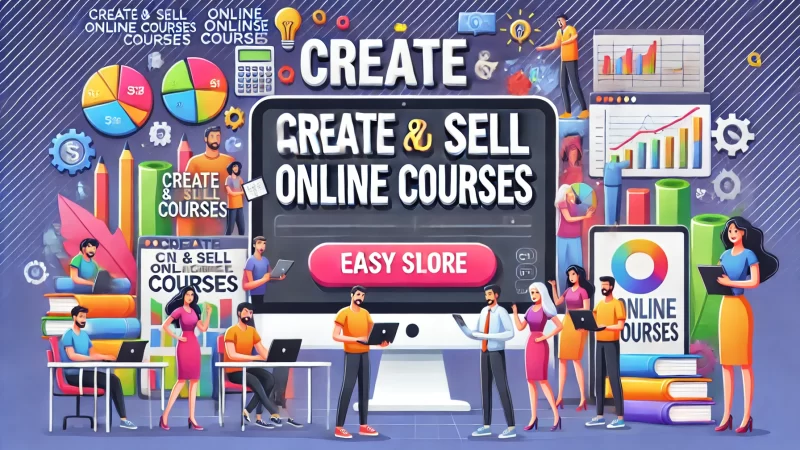
Creating and selling online courses is a smart way to start getting money while sharing your expertise. I’ve noticed that online education is booming, and there’s a growing demand for courses in nearly every niche. With the right approach, you can turn your knowledge into a profitable income stream.
What’s great about online courses is the flexibility they offer. You create the course once and can sell it repeatedly. I suggest leveraging platforms that handle payments, hosting, and marketing, allowing you to focus on content creation. This side hustle requires minimal ongoing effort once set up.
Discovering Lucrative Topics For Your Online Courses
Choosing the right topic for your course is essential for success. I recommend starting with a subject you’re passionate about but also one that solves a problem or teaches a skill in demand. Popular areas include personal development, tech skills, or creative hobbies, as these attract a wide audience.
I’ve heard it helps to ask yourself, “What do I know that others want to learn?” Focus on topics you’re knowledgeable about, but ensure they are relevant. If your topic is too niche or outdated, it may be hard to find students. Instead, I advise aiming for evergreen topics that remain valuable over time.
Researching your competitors is another good step. I suggest exploring what’s already out there and identifying gaps in the market. This way, you can find an angle that differentiates your course. I’ve noticed that successful courses often add a unique twist or cover a specific sub-topic that’s under-served.
You can also survey your audience to discover what they’re interested in learning. If you already have a blog or social media following, I suggest reaching out to see what challenges they face. Creating a course that directly addresses your audience’s needs increases your chances of making sales.
Lastly, I recommend validating your topic before fully developing the course. You can do this by creating a mini-course or offering a free webinar to gauge interest. I’ve found that this approach helps you understand whether your course idea has the potential to attract paying students.
Best Platforms To Sell Online Courses Without Heavy Investment
There are numerous platforms to sell your online courses without significant investment. I recommend Teachable and Thinkific for their user-friendly interfaces and built-in marketing tools. Both platforms offer free plans, allowing you to get started without upfront costs and scale as your course grows.
Udemy is another option worth exploring. I think it’s ideal for beginners because it provides access to a large marketplace of potential students. While Udemy takes a percentage of your sales, the exposure you get from their audience can be invaluable, especially when you’re starting out.
For those who prefer more control over their pricing and content, I suggest Podia. It offers a flat fee and gives you the ability to sell courses, memberships, and digital downloads. I love that Podia doesn’t charge transaction fees, which means you keep more of your earnings.
Kajabi is another excellent platform, though it’s on the pricier side. I find it’s best suited for those who plan to scale their online course business into a full-time endeavor. With Kajabi, you get powerful marketing automation tools and an all-in-one solution for course creation and sales.
If you’re looking for an affordable alternative, I recommend exploring Skillshare. Instead of charging students per course, Skillshare operates on a subscription model. I find that this allows you to earn royalties based on how many minutes students watch, providing a steady stream of income over time.
Marketing Your Courses To Reach A Global Audience
To reach a global audience, I recommend starting with social media platforms. Facebook, Instagram, and LinkedIn are great for promoting courses through organic posts or paid ads. I’ve seen many course creators succeed by running targeted ads that highlight the value and benefits of their course content.
Email marketing is another effective tool. I suggest building an email list from the start, offering potential students a free resource or mini-course in exchange for their email. From there, you can nurture this audience with valuable content and eventually pitch your course when they’re ready to buy.
Webinars are a powerful way to showcase your expertise and attract students. I advise hosting a free live webinar on a topic related to your course. This gives potential students a taste of what they’ll learn and builds trust. I find that webinars often lead to higher conversion rates compared to other methods.
Partnering with influencers or guest posting on relevant blogs can also help you expand your reach. I’ve seen course creators collaborate with influencers to promote their courses to a wider audience. When done right, influencer marketing can bring in a significant number of students in a short period.
Lastly, I suggest utilizing online communities like Facebook groups or Reddit to market your course. These platforms allow you to engage with people who are already interested in your subject matter. I’ve found that being active in these groups and providing value leads to organic interest in your course.
How To Price Your Online Courses For Maximum Profitability
Pricing your course correctly is crucial for maximizing profits. I suggest starting by researching what similar courses in your niche charge. You don’t want to underprice yourself, as this can devalue your content. I recommend pricing your course slightly higher if it offers more in-depth value or unique features.
Offering multiple pricing tiers is another strategy I advise. You can create a basic version of your course at a lower price and offer a premium tier with extra content, live Q&As, or personalized coaching. I’ve noticed that this allows you to cater to both budget-conscious students and those willing to invest more.
One common approach is to use value-based pricing. I think it’s important to focus on the results your course will provide. If your course helps someone advance their career, start a business, or solve a significant problem, pricing it higher is justified. I’ve found that value-based pricing resonates well with students.
To encourage more sales, I recommend offering limited-time discounts. I’ve seen how a sense of urgency can motivate potential students to purchase sooner rather than later. Promotions like early bird discounts or holiday sales can help boost enrollments without lowering the perceived value of your course.
Lastly, I suggest offering a money-back guarantee. This reduces the risk for students, making them more likely to purchase. I’ve noticed that offering a 30-day guarantee provides peace of mind to buyers, and rarely do satisfied students request refunds if your course delivers on its promise.
Benefits Of Offering Free Trials And Bundled Content
Offering a free trial is a fantastic way to attract students. I’ve found that allowing potential students to experience part of the course firsthand often leads to higher conversion rates. A free trial gives them confidence in the quality of your content before committing to a purchase.
I suggest bundling related courses together to provide more value to students. For example, if you have multiple courses on similar topics, offering them as a package at a discounted rate can encourage more sales. I’ve noticed that bundles appeal to students who want comprehensive knowledge in one go.
Another option I recommend is offering bonus materials with your course. This could be in the form of downloadable resources, additional video content, or exclusive group access. I believe these extras can make your course more appealing, differentiating it from competitors and providing added value.
Free trials can also serve as a powerful lead generation tool. I think it’s smart to offer a limited version of your course for free in exchange for an email address. This gives you the opportunity to follow up with students through email marketing, increasing the chances of converting them into paying customers.
I’ve heard that adding a sense of exclusivity works well too. You can create limited-time offers for bundled content or free trials, making students feel they’re getting special access. This tactic builds urgency and can lead to quicker enrollment decisions, helping you boost your sales.
How To Use Feedback To Improve Your Course And Boost Revenue
I recommend actively seeking feedback from your students as it’s crucial for continuous improvement. I’ve found that reviews and surveys help pinpoint areas that need enhancement. Implementing this feedback not only improves your course but also boosts student satisfaction, leading to better reviews and more enrollments.
Encourage students to leave honest reviews. Positive feedback builds social proof, making it easier to attract new students. If you receive constructive criticism, I suggest embracing it. Addressing these issues shows you care about student experience and can help refine your course for future success.
Incorporating feedback allows you to add extra content or clarify difficult concepts. I’ve noticed that updated courses tend to perform better as they offer more value to students. I suggest periodically reviewing your course and adding new lessons or bonus materials based on student suggestions.
I also recommend using feedback to fine-tune your marketing. If students consistently praise specific features of your course, I suggest highlighting those aspects in your promotional materials. Understanding what resonates most with your audience can significantly improve your messaging and attract more students.
Finally, I think engaging with your students after they complete the course is key. Encourage them to share their progress and success stories. This not only helps improve the course but can also serve as powerful testimonials for marketing purposes, boosting your credibility and future sales.
Email Marketing: A Powerful Tool For Getting Money Online
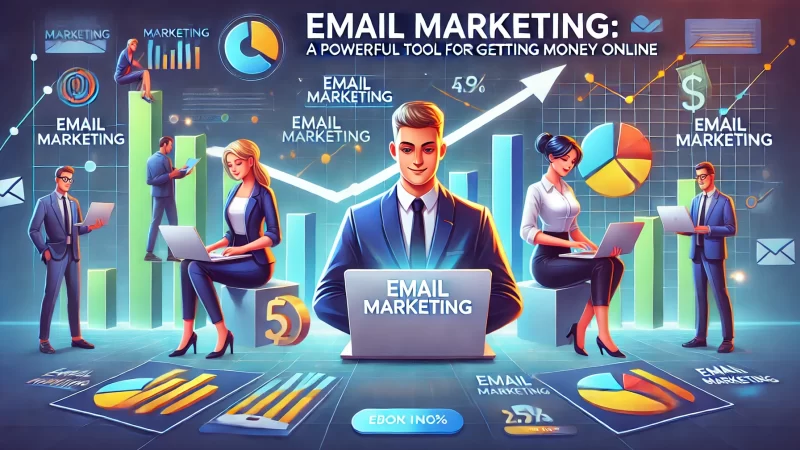
Email marketing is a tried-and-true method for getting money online by connecting directly with your audience. I believe the beauty of email marketing lies in its ability to nurture relationships over time. A well-maintained email list allows you to engage, inform, and convert subscribers into paying customers.
One of the key advantages is control. Unlike social media, where algorithms decide visibility, email marketing gives you direct access to your audience’s inbox. I’ve found this creates a more personal connection, which leads to higher engagement rates and, ultimately, more sales for your business.
How To Build A Strong Email List That Generates Income
Building a strong email list is essential for success. I suggest starting by offering something valuable in exchange for email addresses, such as a free guide or discount. This method attracts subscribers who are genuinely interested in what you have to offer, increasing the likelihood of future conversions.
I recommend using opt-in forms strategically across your website. I’ve seen pop-up forms, exit-intent offers, and embedded forms on high-traffic pages generate a steady stream of sign-ups. The key is to make your offer compelling, so people are motivated to share their email addresses.
Social media is another great place to promote your email list. I suggest creating posts that highlight the benefits of joining your list. Whether it’s exclusive content, early access to sales, or valuable tips, giving people a reason to sign up helps grow your list faster. Engaging visuals also help.
Collaborating with influencers or partners in your niche can accelerate list growth. I recommend working with others to co-promote each other’s email lists, which helps reach new audiences. It’s a win-win situation for everyone involved, and I’ve seen this strategy work wonders for growing a list quickly.
Once you’ve built your list, I advise maintaining a consistent schedule of communication. Sending regular emails keeps your audience engaged and prevents them from forgetting about you. I’ve noticed that list inactivity can lead to higher unsubscribe rates, so keeping subscribers engaged is critical.
Crafting Email Campaigns That Convert Subscribers Into Buyers
Crafting high-converting email campaigns starts with an attention-grabbing subject line. I always advise using power words that create curiosity or urgency. Your subject line is the first thing subscribers see, and I’ve noticed that a compelling headline can significantly improve open rates.
Once your email is opened, I suggest focusing on delivering value in the body. I recommend keeping the tone conversational while offering helpful insights or special promotions. Emails that provide actionable advice, relevant to the reader’s needs, are more likely to drive engagement and sales.
Personalization is key to increasing conversions. I’ve heard that emails using the subscriber’s name and tailored content tend to perform better. For example, segmenting your list based on behavior or preferences allows you to send targeted offers. I think personalized campaigns feel more thoughtful and relevant.
I also find that strong calls-to-action (CTAs) make a huge difference. Whether it’s “Shop Now,” “Get Your Free Trial,” or “Claim Your Discount,” I recommend making your CTA clear and direct. A single, focused CTA reduces confusion and makes it easy for readers to take the next step.
Lastly, I suggest testing different email formats to see what resonates best with your audience. A/B testing subject lines, CTA buttons, and email length can help fine-tune your campaigns. I’ve noticed that small tweaks often lead to big improvements in conversion rates.
Using Automation In Email Marketing To Save Time And Boost Sales
Email automation is a game-changer for any business looking to save time while boosting sales. I recommend setting up automated sequences, such as welcome emails or post-purchase follow-ups. I’ve seen these work well because they nurture relationships without needing constant attention.
I suggest creating a welcome email series for new subscribers. This is a great opportunity to introduce your brand, share your story, and build trust. I think this automated touchpoint ensures every new subscriber gets a consistent experience, which helps convert them into loyal customers over time.
Cart abandonment emails are another automation I advise using. These emails remind customers of products they’ve left in their cart and encourage them to complete the purchase. I’ve heard that adding a discount code to the second or third email in the sequence can significantly improve conversion rates.
Automation also extends to re-engagement campaigns. I find it useful to automatically reach out to inactive subscribers, offering them incentives to re-engage with your content. This keeps your list healthy and ensures you’re not paying to send emails to people who are no longer interested.
Finally, I suggest automating post-purchase sequences. Following up with a thank-you email and offering related product recommendations encourages repeat purchases. I’ve noticed that post-purchase automation not only boosts sales but also enhances customer satisfaction and loyalty.
Best Email Marketing Tools For New Entrepreneurs
For new entrepreneurs, choosing the right email marketing tool is crucial for building and maintaining a profitable list. I recommend Mailchimp for its ease of use and robust free plan. It’s great for beginners, offering automation features, templates, and analytics to help you understand what’s working.
ConvertKit is another excellent option, especially for creators. I love its simplicity and focus on building connections. With its automation capabilities and seamless integration with various platforms, ConvertKit is ideal for anyone looking to grow their email list while nurturing subscribers effectively.
If you’re looking for more advanced features, I suggest ActiveCampaign. While it’s more expensive than some options, I’ve found it offers powerful automation, segmentation, and CRM tools that can help scale your business. For entrepreneurs serious about email marketing, it’s a fantastic investment.
AWeber is a reliable choice if you’re after simplicity and affordability. I think it’s particularly well-suited for small businesses. AWeber offers a drag-and-drop builder, autoresponder features, and a selection of templates, making it easy to create professional-looking emails without technical skills.
Lastly, I recommend Klaviyo for eCommerce entrepreneurs. Klaviyo’s deep integration with eCommerce platforms like Shopify allows for highly targeted email campaigns. I’ve seen many online stores use Klaviyo to boost sales by sending personalized product recommendations and abandoned cart emails.
How To Segment Your Email List For Better Targeting
Segmenting your email list allows you to target specific groups of subscribers with relevant content. I recommend starting by segmenting your list based on behavior, such as past purchases or engagement levels. This ensures your subscribers receive content that aligns with their interests, boosting engagement.
I also advise using demographic segmentation, such as age, location, or gender, if relevant to your business. I’ve seen businesses tailor their messaging to different groups within their audience, leading to higher open rates and conversions. For example, local offers can be sent to subscribers in a specific area.
Another useful segmentation strategy I’ve noticed is targeting subscribers based on their position in the sales funnel. New subscribers might receive educational content, while repeat customers get promotional emails. I find this helps create a personalized experience that nurtures leads into loyal customers.
It’s also effective to segment by engagement levels. I suggest sending more frequent emails to highly engaged subscribers, while less active ones might benefit from re-engagement campaigns. This helps you focus your efforts on subscribers who are most likely to convert, improving your overall results.
Finally, I believe segmentation allows you to run A/B tests more effectively. By testing different approaches with small segments of your list, you can refine your campaigns before rolling them out to your entire audience. I’ve found this reduces risk and leads to higher-performing email campaigns.
Leveraging Affiliate Marketing In Email Campaigns For Extra Cash
Email campaigns are an excellent platform for affiliate marketing. I recommend promoting products or services that align with your audience’s interests, offering genuine value while earning commissions. I’ve seen this work well because it feels like a natural extension of the content you already provide.
I suggest integrating affiliate links into your regular content emails, rather than making every email a hard sell. I find that mixing value-driven content with occasional affiliate promotions creates trust and keeps your audience engaged without feeling overwhelmed by sales pitches.
One of the best approaches I’ve seen is to share personal experiences with the affiliate products you’re promoting. I believe that when you can speak from experience, it adds authenticity to your recommendation. This helps increase conversions, as subscribers trust that you genuinely believe in the product.
It’s important to disclose affiliate relationships in your emails. I recommend being transparent with your audience about your partnerships. I’ve found that honesty builds credibility, and most subscribers appreciate knowing that their purchase supports your work at no extra cost to them.
Lastly, I suggest tracking the performance of your affiliate campaigns. Many email marketing platforms offer analytics tools that allow you to see how well your affiliate links are performing. I find that continuously refining your strategy based on what works best helps maximize your earnings over time.
Frequently Asked Questions (FAQ)
What is the best way to start email marketing if I’m a beginner?
If you’re new to email marketing, I recommend starting with a user-friendly platform like Aweber or ConvertKit. These tools offer templates and automation features to help you get started without technical knowledge. Focus on building a list by offering valuable content, such as a free guide or discount, in exchange for email addresses.
What should I include in my email marketing campaigns?
Your emails should provide value and engage your audience. I recommend a mix of educational content, exclusive offers, product updates, and personalized recommendations. Including a clear call-to-action (CTA) encourages readers to take the next step, whether it’s making a purchase, signing up for a webinar, or reading a new blog post.
What is email segmentation, and why is it important?
Email segmentation is the process of dividing your email list into smaller groups based on criteria like behavior, interests, or demographics. I believe segmentation is crucial because it allows you to send more relevant content to each group, improving open rates, engagement, and conversion. Personalized emails perform better than generic ones.
How can I start making money in my free time?
There are numerous ways to start making money in your free time, such as blogging, freelancing, dropshipping, and creating online courses. These methods require minimal upfront investment and can easily be scaled depending on the time and effort you’re willing to commit.
What is the easiest way to make money online without much investment?
Blogging is one of the easiest ways to make money online with minimal investment. You can start a blog on platforms like WordPress or Blogger, and once it grows, you can monetize it through ads, affiliate marketing, or sponsored content.
What niche should I choose for my blog to make money?
Choose a niche you’re passionate about but also has demand. Popular niches include personal finance, fitness, travel, and technology. Conduct keyword research to ensure there’s a potential audience interested in your content.
How much time does it take to start earning money from a blog?
Earning money from a blog typically takes 6 months to a year, depending on the effort put into content creation, SEO, and audience building. Consistent posting, SEO strategies, and promoting your blog through social media can help speed up the process.
Is dropshipping a good way to earn money part-time?
Yes, dropshipping is a great way to earn money part-time as it doesn’t require you to hold inventory. You simply set up an online store, choose a supplier, and when customers order, the supplier ships the products directly to them.
How much do I need to start a dropshipping business?
You can start a dropshipping business with as little as $100. The primary costs include setting up an online store (e.g., Shopify), domain registration, and basic marketing efforts like running ads or promoting on social media.
What topics should I cover in an online course to make money?
Choose topics that solve a problem or teach a valuable skill. Popular areas include personal development, tech skills, business, and creative hobbies. Make sure your course is unique or provides a new perspective on the subject matter.
How do I price my online course for maximum profit?
Research similar courses in your niche to determine a competitive price. Offering multiple pricing tiers (basic and premium versions) or including bonuses like exclusive content or coaching can help maximize profitability.



